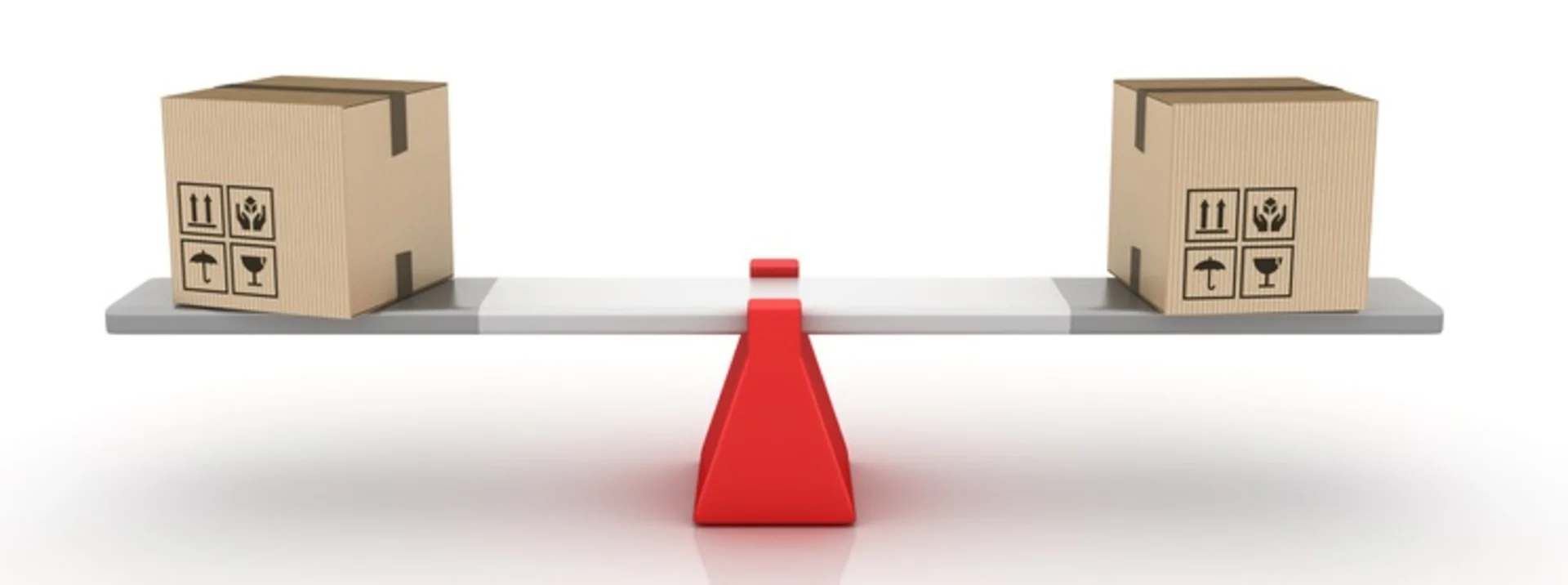
Why postage weight is so important and how to make sure you get it right!
15 June 2018 | Editor's Pick | Packaging Guides | Parcel Deliveries
Author: Parcel2Go.com
Why postage weight is so important and how to make sure you get it right!
Every day, hundreds of thousands of parcels are sent in the UK and abroad. In fact, the number of items we get delivered has risen by 7% in the past year alone.
With so many of us sending parcels daily, we got to thinking about one of the most common mistakes our customers make when booking their parcel delivery, postage weight! More specifically, declaring the incorrect postage weight. This may seem self-explanatory, but it’s easier than you think to displace a decimal point when entering parcel weight in the quote box.
Postage weight is one of the main factors any courier considers when pricing up your parcel delivery, which is why it’s so important to get it right. Inputting a higher parcel weight than you’re sending could cost you more; similarly, inputting a lower weight could mean a surcharge from the courier once collected, adding an avoidable extra expense.
Here at Parcel2Go we want to make things as easy as possible for our customers, which is why we only ever ask for the weight in kilos. What if my postage weight is less than a kilo I hear you ask? Easy! Our site recognises decimals, so say your parcel weighs 500 grams, simply input 0.5kg.
Of the 650,000 plus parcels delivered last month, 52% of those weighed up to 2kgs, now imagine weighing that in grams, so inputting 2000 as the weight, 2000kgs in weight is huge and would equally cost a huge amount. So it’s important that before sending a parcel you get as accurate a weight as possible.
A Parcel can easily be weighed at home on any household scale, just make sure that if the metric is wrong that you convert it into kilos before booking your parcel for delivery- there are any number of free weight converter apps that’ll do the trick for you!
It’s also important to make sure that you weigh the item once it is packed and ready to be sent – this will help give the most accurate postage weight and therefore an accurate cost.
Because we want to make sending parcels as easy as possible, we have weighed some items you’ll find around the house to compare to common postage weights. So, if you don’t have access to any scales, you can get an idea of a parcel’s weight by comparing it to household or commonplace items. While not an exact science, it can help you to estimate the price of sending a parcel.
Weight of household/common items:
A can of baked beans or tinned tomatoes - weigh between 400-440g
A regular sized bag of sugar - weighs 1kg
4 pint of milk - weighs 2kg
PlayStation 4 – weighs slightly under 3kg, best to round up to 3kg to avoid a surcharge
A small mirror – this will depend on the exact size, but a small vanity or wall mirror weighs around 5kg
Wash load – the average wash load weighs around 7kg. This could include two pairs of jeans, two or three bath towels, a double sheet, numerous pairs of pants and socks, and several hand or tea towels.
Sausage dog (Dachshund) OR two Cats – this is a bit more out there, but a small dog or two cats weigh approximately 10kg
Microwave – the average free standing microwave weighs approximately 12kg, some weigh slightly less but again we would suggest slightly over estimating to avoid further charges
55inc TV – slightly more difficult to lift yourself, but if you manage it you’ll find that it weighs 17kg
4 year old child – You’ll struggle to find many common items that weigh 20kg, however, if you have children (or any nieces or nephews) that are around 4 years old they should weigh around 20kg
The above information is only a rough guide – we recommend using a proper scale to weigh your parcel before booking. If you are a regular sender, then it’s worth investing in a pair of household scales to ensure you aren’t over spending on your deliveries.